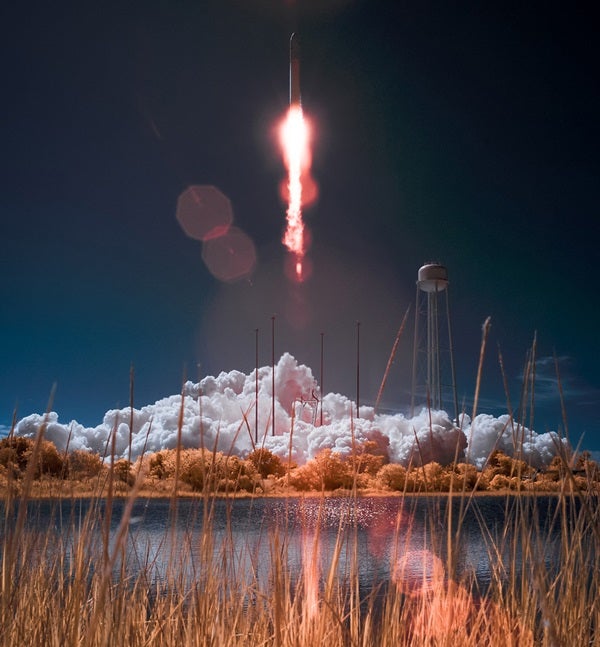NASA commercial space partner Orbital Sciences Corp. of Dulles, Virginia, launched its Cygnus cargo spacecraft aboard its Antares rocket at 10:58 a.m. EDT Wednesday from the Mid-Atlantic Regional Spaceport Pad-0A at NASA’s Wallops Flight Facility in Virginia. At the time of launch, the space station was flying about 261 miles (420 kilometers) above the southern Indian Ocean. Cygnus will rendezvous with the station Sunday on its demonstration mission to deliver 1,300 pounds (590 kilograms) of cargo, including food and clothing, to the space station’s Expedition 37 crew.
All three Expedition 37 crew members — Commander Fyodor Yurchikhin and Flight Engineers Karen Nyberg and Luca Parmitano — gathered around a laptop computer screen in the station’s Destiny laboratory to watch a live video stream of the launch of Cygnus.
The two astronauts then moved on to some onboard training to review the installation procedure for Cygnus. When Cygnus nears the station on Sunday, Parmitano, with assistance from Nyberg, will use the robotics workstation in the cupola to command the station’s 57-foot (17 meters) robotic arm, Canadarm2, to reach out and grapple the vehicle. He will then maneuver the arm to guide Cygnus to its docking port on the Earth-facing side of the Harmony node for installation.
All three Expedition 37 crew members participated in onboard training to review their roles and responsibilities in the event of an emergency aboard the station such as a fire or rapid depressurization. Afterward, they tagged up with flight controllers at Mission Control in Houston to review the drill and discuss any changes needed.










